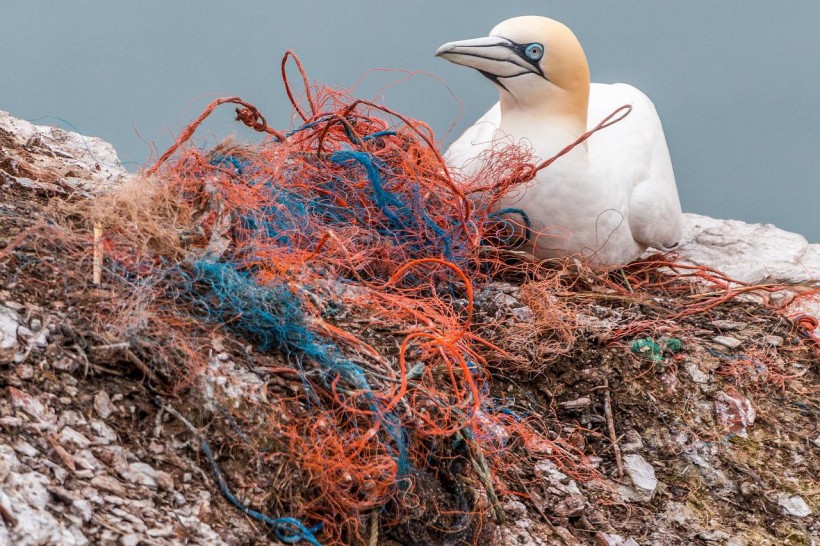An online project called Birds and Debris invites participants from around the globe to send images of various species, particularly birds harmed by entanglement and nest debris incorporation. According to its website, the photos uploaded by the participants could help scientists investigate and fully understand which birds are affected. The project's scientists claim that they regularly observe birds caught in various objects, such as rope, fishing line, balloon ribbon, and flip-flops.

Safety net
Birds and Debris Findings on Images Submitted Through the Website
Dr. Alex Bond of the Natural History Museum in London has been working on this project with his colleagues for four years to spread awareness of the widespread plastic waste problem in the environment. The project's main goal is to document how waste, mainly plastic pollution, affects the avian world.
According to Bond, there is a good chance that a bird will have human waste in some part of its nest if it uses long fibrous materials to build a nest, like seaweed, branches, or reeds.
The team examined how many images submitted showed personal protective equipment (PPE) related to the pandemic. In almost a quarter of the images, birds can be seen nesting or getting caught in disposable face masks.
Bond said that almost everything is a mask. Considering the various components that go into making a surgical mask, the elastic can be seen tangled around the legs of the birds. It can also be seen on the hard piece of plastic that holds it over the nose or the fabric that may cause injury to birds trying to ingest it.
"When you start looking for this stuff, you'll see it everywhere," Bond said. According to him, it has illustrated the huge geographic scope, which includes reports from Japan, Australia, Sri Lanka, the UK, and North America.
Scientists use the catch-all term "plastic" to refer to different polymers, and one good example is the mask.
ALSO READ: Discarded Face Masks and PPEs End Up in Oceans
Birds and Debris Researchers' Advocacy
The researchers claim that they are doing this to call attention to the underlying issue resulting in such a large amount of debris entering the environment.
The lead researcher from Dalhousie University in Canada, Justine Ammendolia, told BBC News that seeing the extent of the impact on species all over the world was devastating. She added that in April 2020, Canada received the first report of a bird hanging from a facemask in a tree. It was published in the Independent. From there, sightings quickly spread across the globe. It simply demonstrates the harm individuals can do globally to the environment in a very short time.
According to Bond, most of today's large-scale plastic production is commercial and industrial. So switching to a bamboo toothbrush or a canvas shopping bag won't save the planet. Therefore, a combination of top-down policies and bottom-up pressure is needed for us to say enough is enough.
Ammendolia said that it is acceptable to feel sad for people viewing these images for the first time. She added that we need to learn from the unnecessary and frequently invisible suffering some wildlife experienced during the pandemic. She hoped that people would use their sadness as fuel to demand change.
RELATED ARTICLE: COVID-19 PPE Waste Harming Animals Everywhere, Plastic Waste to Increase By 2030
Check out more news and information on Environment in Science Times.














